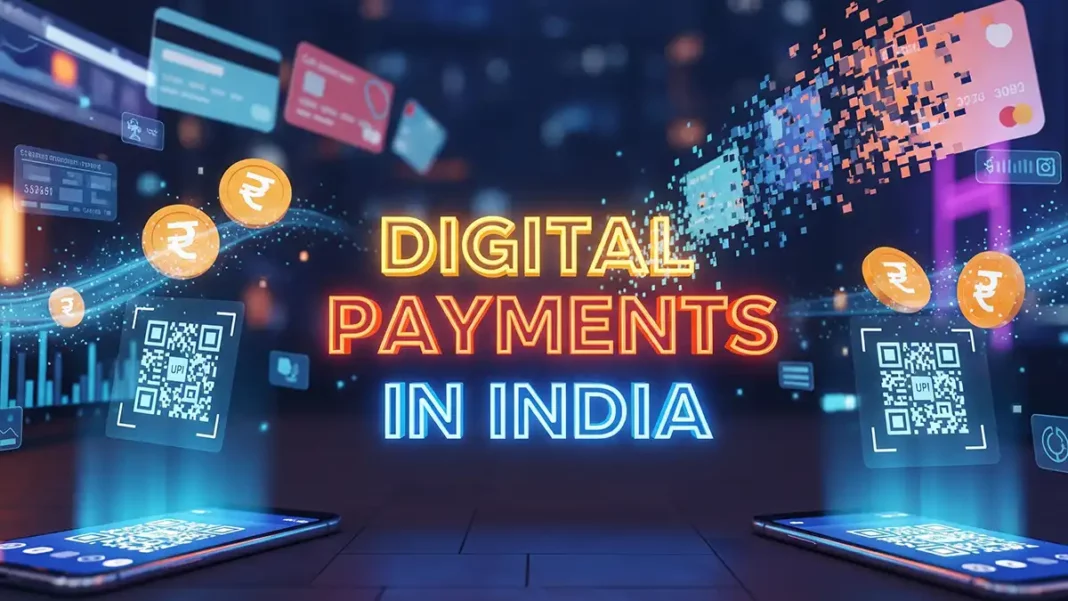Digital payments are a defining characteristic of the country’s economic development. Over the last decade, India has seen a significant movement away from cash-based transactions and toward a vibrant digital payments ecosystem powered by technologies such as UPI, mobile wallets and fintech solutions. As we approach 2025, digital payments in India are expected to drive financial inclusion, economic growth and worldwide leadership in real-time payments.
UPI: The Heartbeat of Digital Payments in India
The Unified Payments Interface (UPI) is crucial to the emergence of digital payments in India. The National Payments Corporation of India (NPCI) launched UPI in 2016, and it has transformed the way Indians transfer money, pay businesses and conduct peer-to-peer transactions. In October 2024, UPI processed 16.58 billion transactions worth ₹23.49 lakh crores – a 45% increase from the previous year. This tremendous development is expected to continue, establishing UPI as the backbone of India’s cashless economy.
What Makes UPI Unique?
- Seamless Integration: UPI allows users to integrate several bank accounts in a single app, making financial transfers and payments much easier.
- 24/7 Access: Transactions can be completed at any time, thanks to features like single-click payments and virtual addresses for anonymity and simplicity.
- Merchant Empowerment: Instant payments and technologies like speech boxes that proclaim accepted amounts benefit small companies and street sellers, helping to develop trust even among people unfamiliar with digital payments.
- App Flexibility: Consumers can use any UPI-enabled app, regardless of bank, providing them more options.
UPI Growth and the Expanding Digital Payments Ecosystem
The scale of UPI’s growth is pretty impressive. In FY 2024-25, UPI processed 11,761.4 crore transactions worth Rs 180.24 lakh crore, representing a 59.2% rise in volume and a 44.8% increase in value year on year. UPI currently accounts for 84% of all retail digital payment volumes in India, up from 75.6% only a year ago. This spike will most likely be driven by:
Mobile-first behavior
Indians are increasingly adopting smartphones to make payments, with mobile transactions climbing 41% to 88.54 billion in the second half of 2024.
POS and QR Expansion
With over 10 million POS machines and a boom in UPI QR codes, digital payments have reached even the smallest towns and rural areas.
Micro-Transactions
The average ticket size for UPI payments is decreasing, indicating widespread use for everyday purchases – a significant shift from the previous emphasis on high-value transactions.
UPI vs Credit Cards India: A New Payment Paradigm
In 2025, the argument between UPI and credit cards in India is still quite significant. While credit cards have traditionally been associated with urban, wealthier users, UPI has democratized digital payments in India, making them available to a far larger populace.
| Feature | UPI | Credit Cards |
| Accessibility | Anyone with a bank account and phone | Requires bank approval, good credit |
| Transaction Cost | Mostly zero for users | Merchant fees, possible user fees |
| Usage | Peer-to-peer, merchant, bill payments | Merchant, online, EMI |
| Security | Two-factor authentication, PIN | Chip & PIN, OTP, signature |
| Rewards | Limited (cashback, offers) | Points, cashback, travel rewards |
| Credit Facility | No | Yes |
| Penetration | Urban and rural, all income groups | Mostly urban, higher income |
The integration of RuPay credit cards with UPI is a major changer, allowing users to pay via credit lines on the UPI network, blurring the distinctions between traditional cards and digital payments in India.
Cashless Economy India: The Vision and Reality
The campaign toward a cashless economy. India’s government policy and public adoption of digital payments are very clear. In FY2024-25, the entire volume of digital payment transactions increased by 34.8%, with retail payments alone up 34.9%. As of January 2025, India had recorded over 18,000 crore digital payment transactions for the fiscal year.
This shift is most likely to be caused by:
- Financial Inclusion: In India, digital payments enable banking for the unbanked, particularly in rural and semi-urban areas.
- Government Initiatives: Policies promoting digital literacy, merchant digitization and financial innovation are extremely beneficial.
- Fraud Prevention: Improved security mechanisms, such as device binding, two-factor authentication and AI-based fraud monitoring, are making digital payments in India safer than ever.
Fintech Trends Shaping Digital Payments in India
Several developments will shape digital payments in 2025, as the fintech industry is highly dynamic:
- SoftPOS and Contactless Payments: Smartphones are already being utilized as payment terminals, making accepting payments more inexpensive for small enterprises.
- AI and Machine Learning: AI is most likely to fuel fraud detection, personalized offers and improved customer support.
- Global Expansion: UPI is currently available in seven countries, including France, the UAE and Singapore, allowing for cross-border digital payments in India.
- Voice Payments: Voice boxes and voice-activated payments are quite popular among small retailers and non-English speakers.
- Micro Credit and BNPL: Fintechs in India are integrating credit and “buy now, pay later” services into digital payments, increasing new borrowers’ access to credit.
Digital Payments in India: Security and Consumer Protection
Security is a top priority for digital payments in India. The Reserve Bank of India (RBI), the NPCI and banks have implemented many safeguards:
- Device Binding: Connecting mobile numbers to devices to prevent illegal access.
- Two-Factor Authentication: Two-factor authentication requires PINs and OTPs for each transaction.
- Transaction Limits: Transaction limits include daily ceilings and use-case restrictions to reduce risk.
- AI-Based Fraud Monitoring: Machine learning is used to generate real-time alerts and block transactions.
- Public Awareness: Campaigns, SMS notifications, and a nationwide cybercrime reporting portal (1930) help consumers remain aware.
Conclusion
Digital payments in India are transforming the economic environment by making transactions faster, safer and more inclusive. UPI’s fast expansion, the advent of fintech solutions and the government’s aim for a cashless economy in India are all set to keep the country at the forefront of global digital payment innovation. In order to properly capitalize on this revolution, continued emphasis on security, infrastructure and consumer education is required. As digital payments evolve in India, they will empower millions of people, fuel economic progress and set new global standards.
Frequently Asked Questions: Digital Payments in India
Q1: What is driving the growth of digital payments in India in 2025?
A: The growth is mostly driven by certain factors such as UPI adoption, mobile-first behavior, government initiatives, fintech innovation and increased financial inclusion
Q2: Is India really moving toward a cashless economy?
A: Yes, with over 18,000 crore digital payment transactions in FY2024-25 and UPI’s supremacy, India is quickly transitioning to a paperless economy.
Q3: Are digital payments in India secure?
A: Digital payments in India are probably going to be safer than ever because of policies like device binding, two-factor authentication, AI-based fraud detection and public awareness programs.
Also Read:
Indian Financial System: Unveiling the Economic Powerhouse!
David William comes from an Engineering background, with a specialization in Information Technology. He has a keen interest and expertise in Web Development, Data Analytics, and Research. He trusts in the process of growth through knowledge and hard work.


